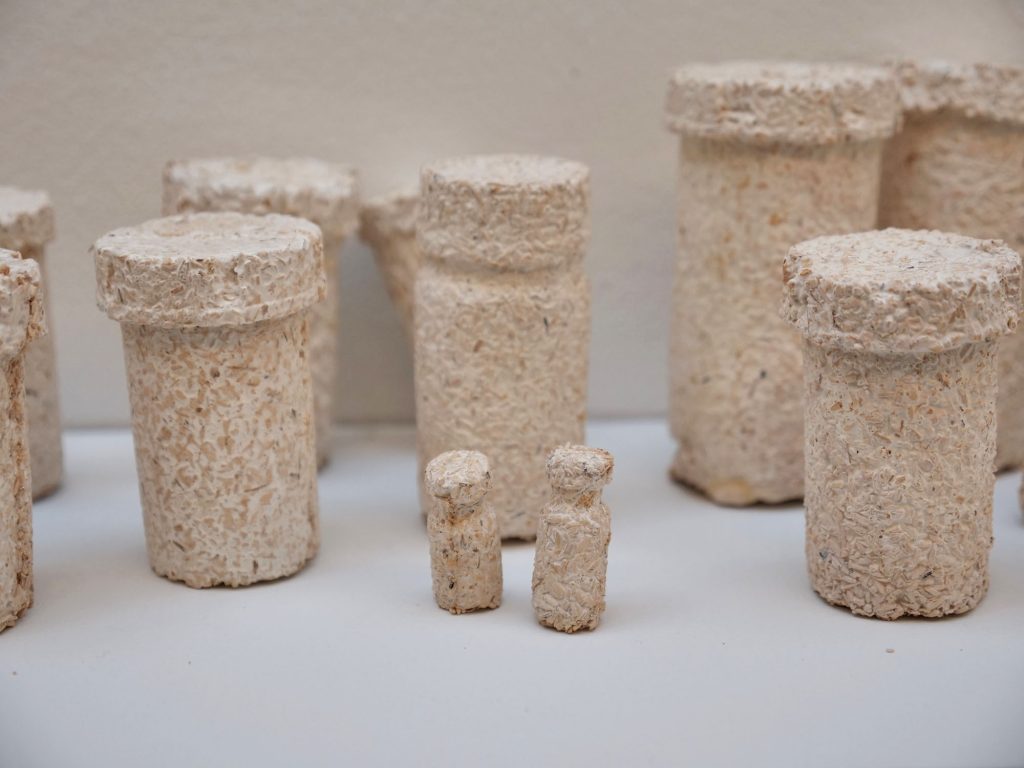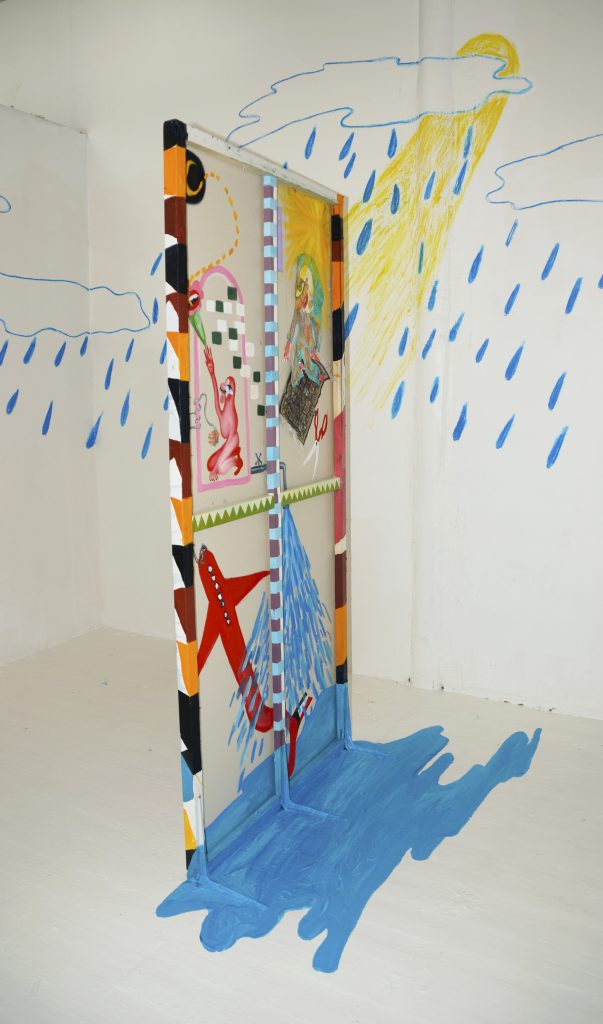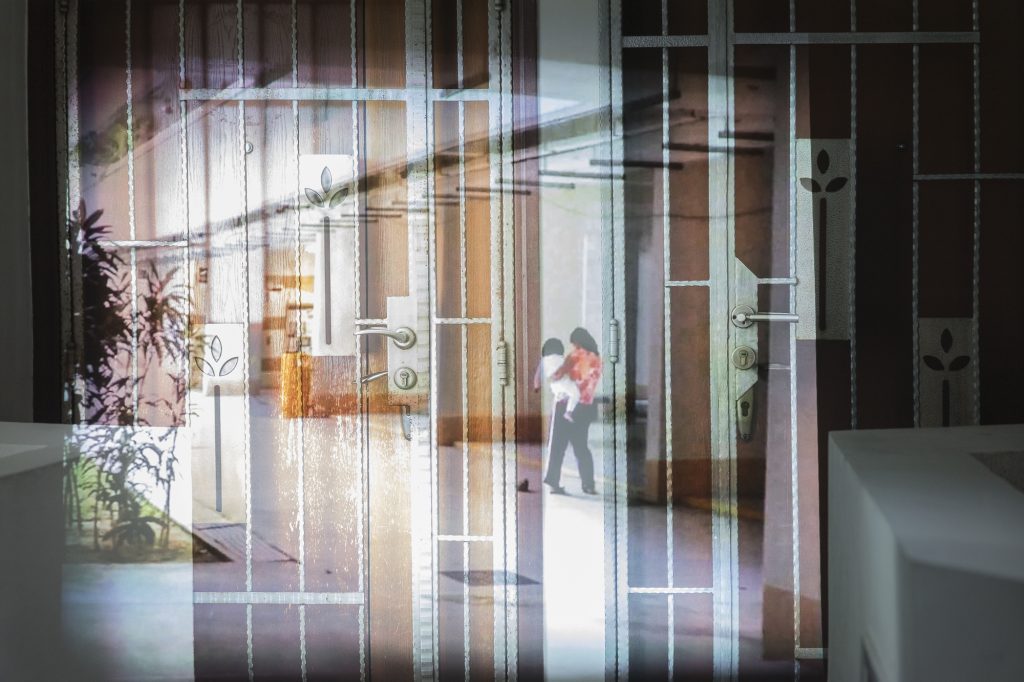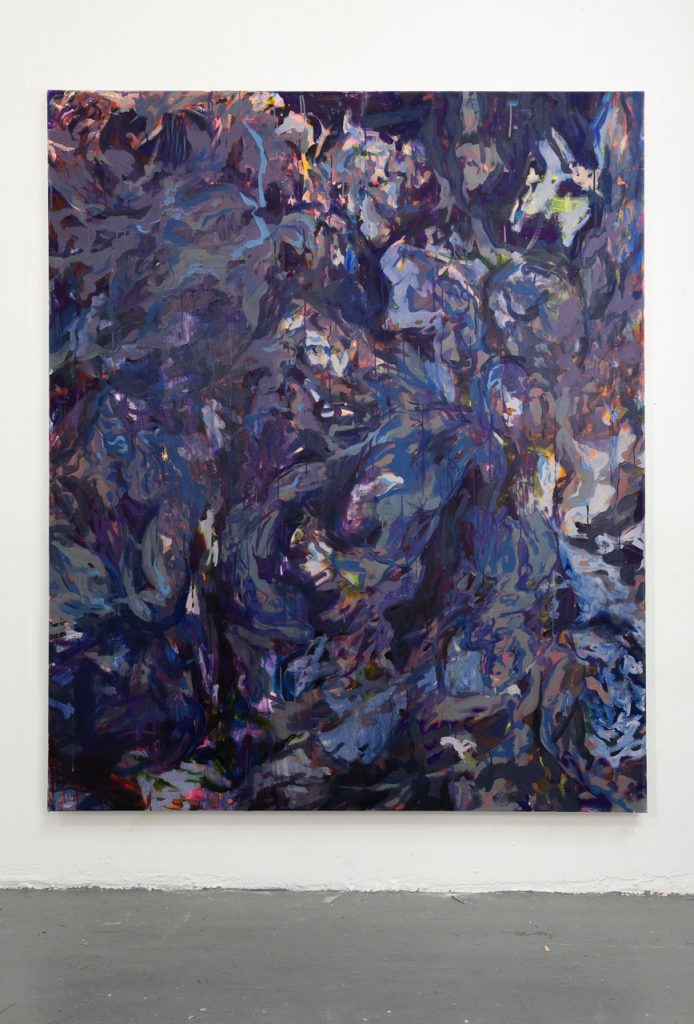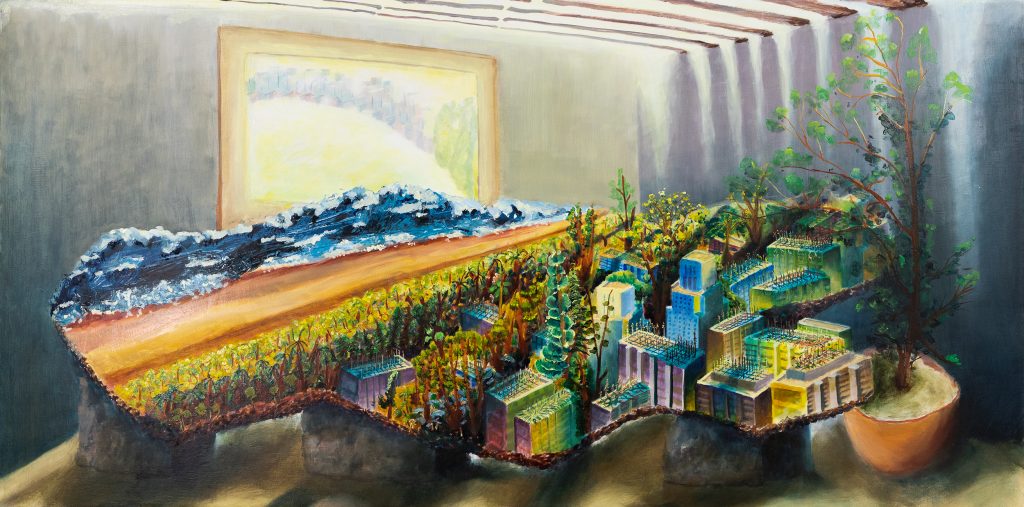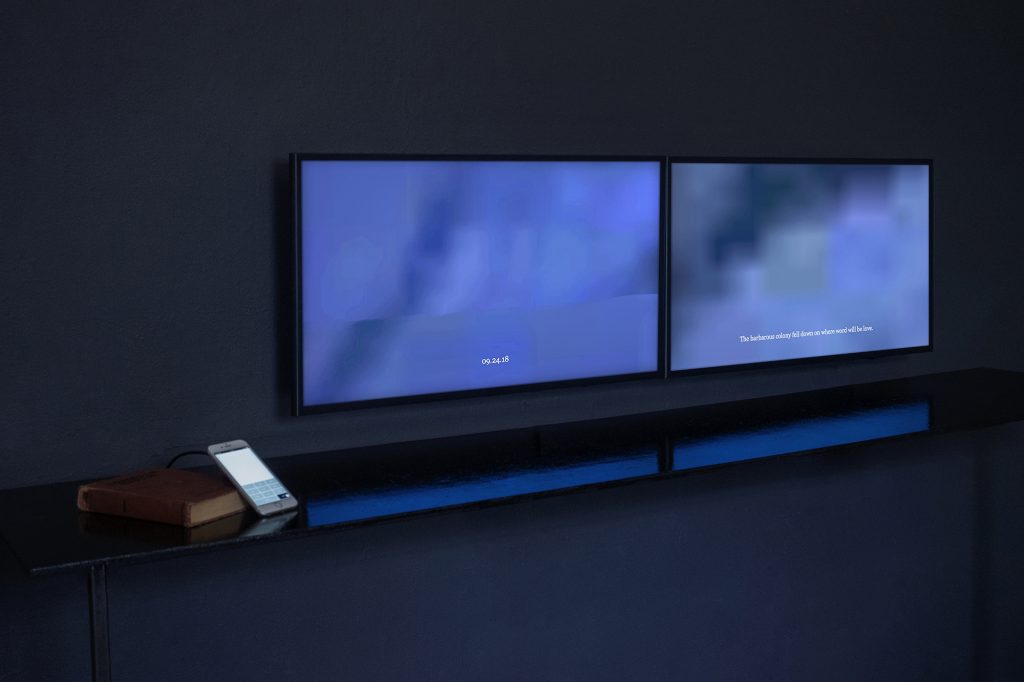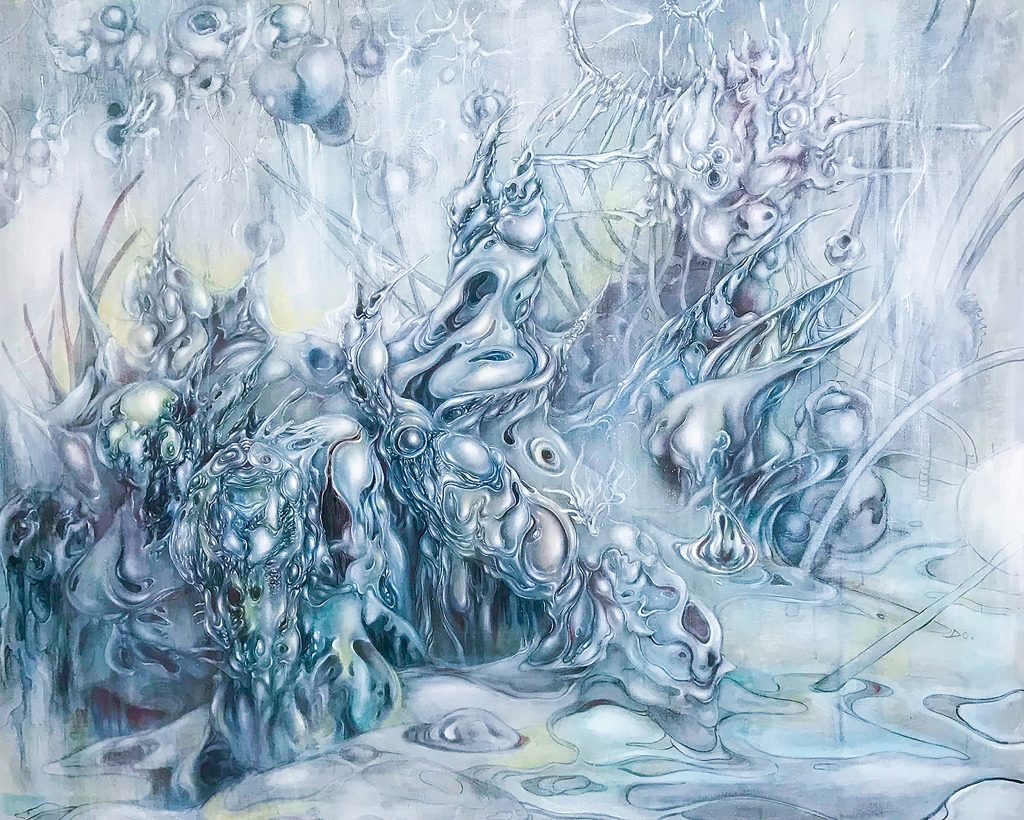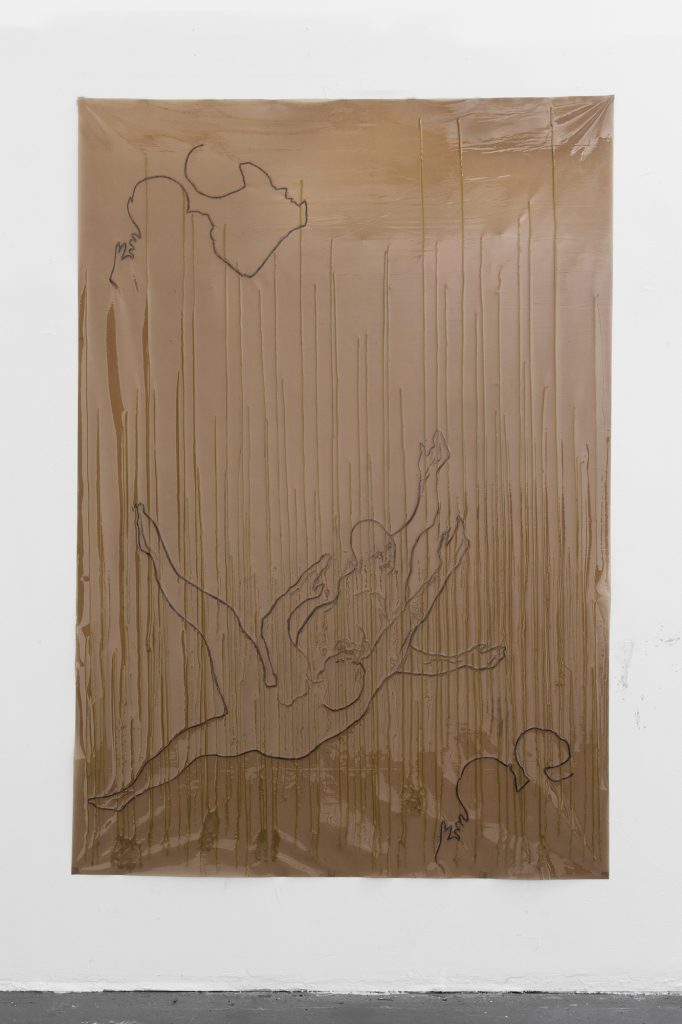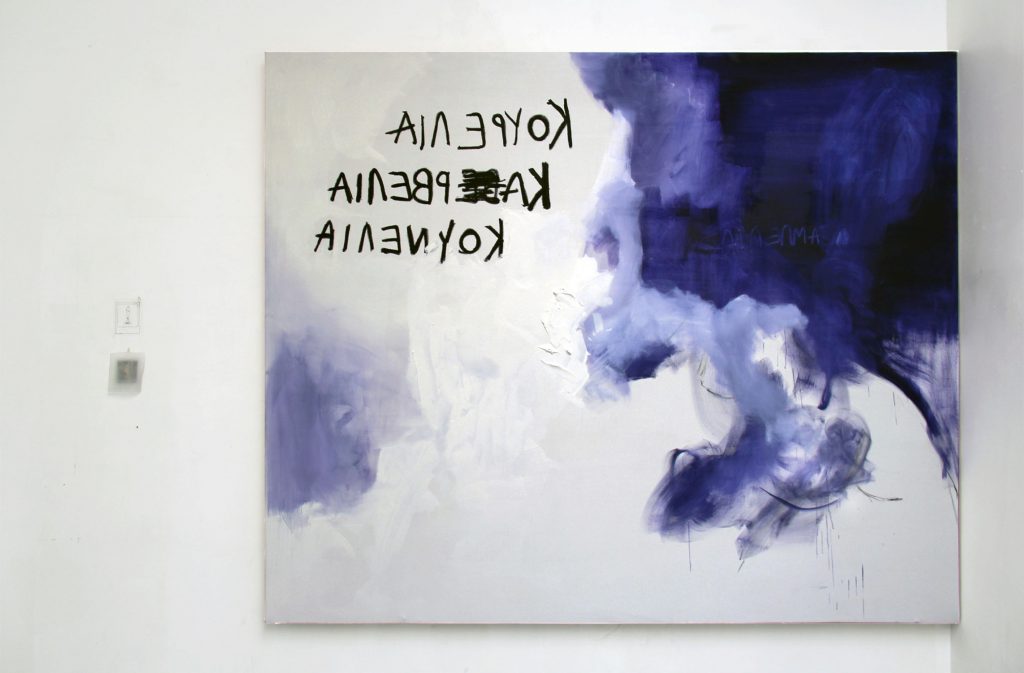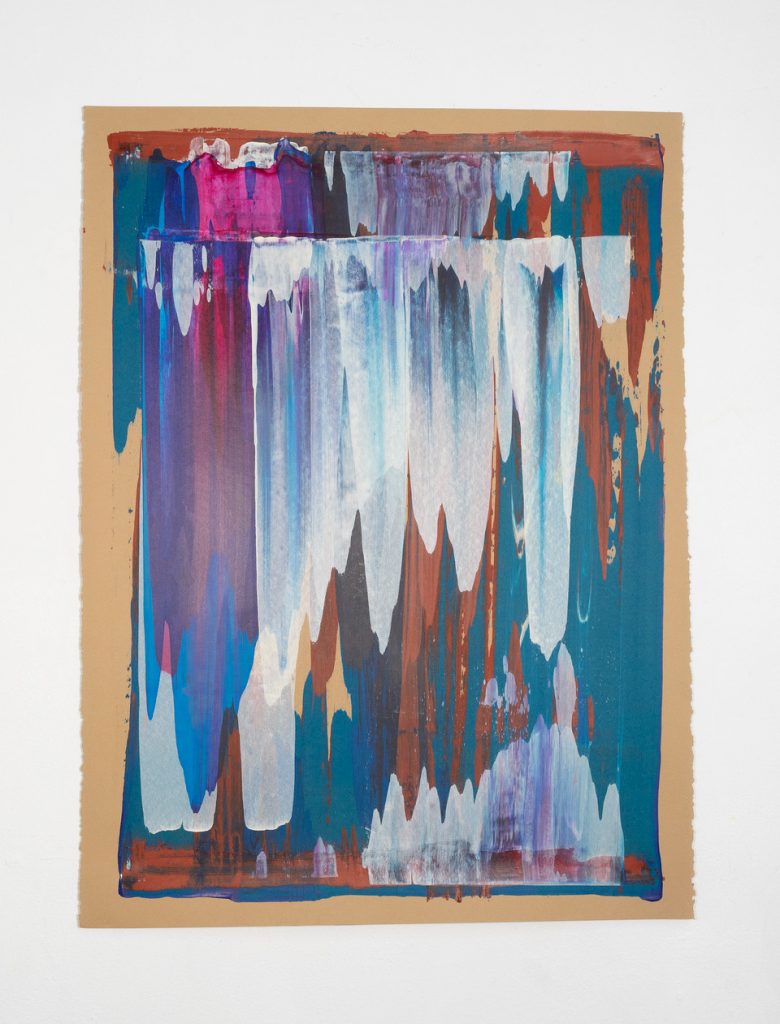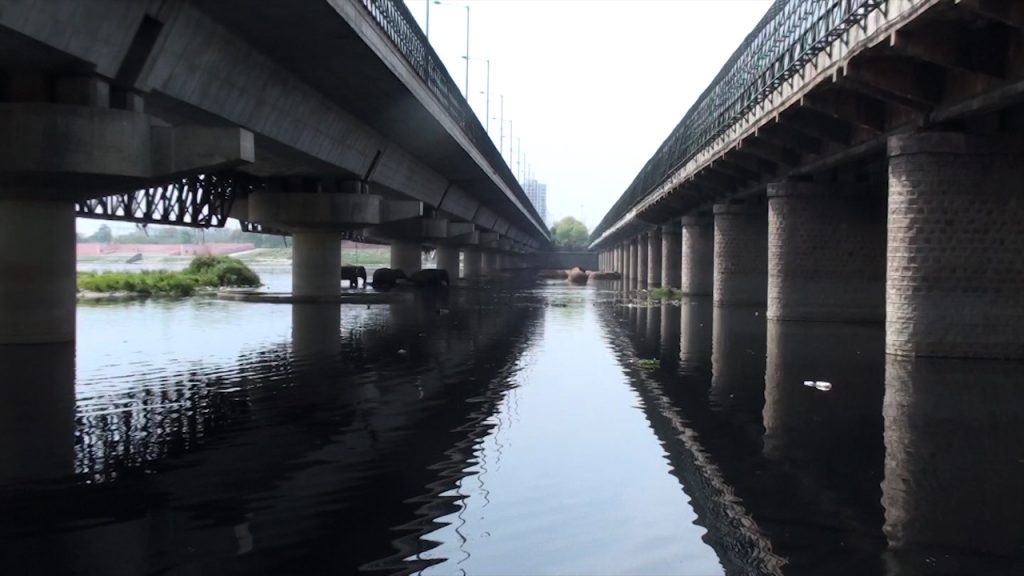BENEATH THEM WAS FOREVER
When astronaut Buzz Aldrin was once asked if he ever felt fearful up in space his answer was that there was a moment, when looking down on the earth from a distance, that he had the impression that beneath him was… forever. While this response may suggest that he felt an1 atmosphere of extreme isolation, he also describes his perspective of viewing the earth from space as a sensation of intense interconnectedness with our planet and all of the people on it. This is not a singular story but common to many space explorers who’ve experienced radical shifts in consciousness, some of which were deeply emotional and promoted a sense of empathy towards the humankind on Earth. It has been described by many astronauts as one of the most meaningful moments of their lives.
As a thesis exhibition, Beneath Them Was Forever… presents artists at a moment of transformation at a radical scale. The artists on view here are launching from their recent pasts, from incubations as students or interims in professional practices, and looking directly outward into their future working lives. It is a moment of trust — trust in progress, in the continuing evolution and power of their art and vision.
In ways, both deliberate and unconscious, their work distils many common threads: the risk of exploration and experimentation; the hybridity of practice that dissolves standard boundaries of genre and the inquiry into the desire to empathize, with each other and in broader, more global terms.
Having confidence in one’s progress means facing an unknown future, and risking a brief glimpse of the grand expanse and momentum of Time, infinite and utterly unknowable. It’s no wonder that the encounter with space provoked both terror and peace for Aldrin and other explorers. For the artists on view in this exhibition, having survived transformative cycles of their practice, this moment, as contrived as it may seem, is an opportunity to argue for the power of art-making to manifest the past and to construct the future.
Walter Benjamin described progress as a storm, powerful and irresistible. He was interpreting a painting by Paul Klee of the Angel of History, whose eyes are fixed on the events of the past and whose heart sees every cycle of change as devastation. Like the Angel, who is determined to remain in the past to repair the damage, the storm of progress is about to overwhelm these artists, fiercely and absolutely.
Kathleen Forde
____
Kathleen Forde is an independent curator based in Brooklyn, NY and the Artistic Director at Large for Borusan Contemporary, Istanbul.
